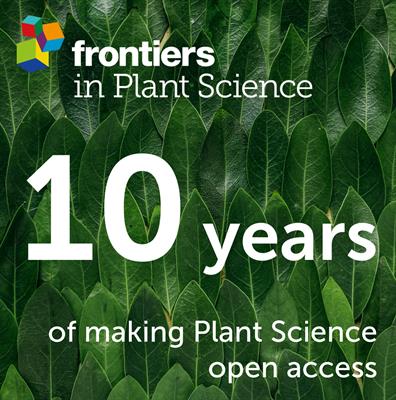训练集优化是多年生孤本作物驯化和种质管理的可行选择:以 Acrocomia aculeata 为例
IF 4.1
2区 生物学
Q1 PLANT SCIENCES
引用次数: 0
摘要
随着农业可持续发展对减缓气候变化的重要性日益突出,多年生本地物种的重要性也与日俱增。然而,与未驯化状态和缺乏改良种质有关的问题阻碍了正式农业举措的发展。具有产油潜力的新热带棕榈树 Acrocomia aculeata 就是一个例子。育种工作可以帮助该物种充分发挥潜力,提高市场竞争力。在此,我们以Acrocomia aculeata为例,介绍了基因组信息和训练集优化作为促进多年生孤本物种育种的替代方法。此外,我们还比较了三种 SNP 调用方法,并首次展示了三种产量相关性状的预测准确度。我们收集了 201 个野生个体两年的数据。我们对这些树木进行了基因分型,并使用三种参考文献进行 SNP 调用:油棕基因组、全新测序和 A. aculeata 转录组。分析的性状包括果实干重(FDM)、果肉干重(PDM)和果肉含油量(OC)。我们在交叉验证和实际验证程序中比较了 GBLUP 和 BayesB 模型的预测能力。随后,我们测试了几个优化标准,这些标准涉及一致性以及提供优化训练集的能力,以便在目标和非目标情况下都能降低风险。以油棕基因组为参考,GBLUP 模型对 FDM、OC 和 PDM 的基因组预测结果较好(预测准确率分别为 0.46、0.45 和 0.39)。使用 PEV、r-score 和核心收集方法提供了规避风险的决策标准。训练集优化是一种改进决策的替代方法,同时利用基因组信息作为一种节约成本的工具,加速植物驯化和育种。优化后的训练集可作为本地物种种群特征描述的参考,有助于种质收集和育种种群构建方面的决策。本文章由计算机程序翻译,如有差异,请以英文原文为准。
Training set optimization is a feasible alternative for perennial orphan crop domestication and germplasm management: an Acrocomia aculeata example
Orphan perennial native species are gaining importance as sustainability in agriculture becomes crucial to mitigate climate change. Nevertheless, issues related to the undomesticated status and lack of improved germplasm impede the evolution of formal agricultural initiatives. Acrocomia aculeata - a neotropical palm with potential for oil production - is an example. Breeding efforts can aid the species to reach its full potential and increase market competitiveness. Here, we present genomic information and training set optimization as alternatives to boost orphan perennial native species breeding using Acrocomia aculeata as an example. Furthermore, we compared three SNP calling methods and, for the first time, presented the prediction accuracies of three yield-related traits. We collected data for two years from 201 wild individuals. These trees were genotyped, and three references were used for SNP calling: the oil palm genome, de novo sequencing, and the A. aculeata transcriptome. The traits analyzed were fruit dry mass (FDM), pulp dry mass (PDM), and pulp oil content (OC). We compared the predictive ability of GBLUP and BayesB models in cross- and real validation procedures. Afterwards, we tested several optimization criteria regarding consistency and the ability to provide the optimized training set that yielded less risk in both targeted and untargeted scenarios. Using the oil palm genome as a reference and GBLUP models had better results for the genomic prediction of FDM, OC, and PDM (prediction accuracies of 0.46, 0.45, and 0.39, respectively). Using the criteria PEV, r-score and core collection methodology provides risk-averse decisions. Training set optimization is an alternative to improve decision-making while leveraging genomic information as a cost-saving tool to accelerate plant domestication and breeding. The optimized training set can be used as a reference for the characterization of native species populations, aiding in decisions involving germplasm collection and construction of breeding populations
求助全文
通过发布文献求助,成功后即可免费获取论文全文。
去求助
来源期刊

Frontiers in Plant Science
PLANT SCIENCES-
CiteScore
7.30
自引率
14.30%
发文量
4844
审稿时长
14 weeks
期刊介绍:
In an ever changing world, plant science is of the utmost importance for securing the future well-being of humankind. Plants provide oxygen, food, feed, fibers, and building materials. In addition, they are a diverse source of industrial and pharmaceutical chemicals. Plants are centrally important to the health of ecosystems, and their understanding is critical for learning how to manage and maintain a sustainable biosphere. Plant science is extremely interdisciplinary, reaching from agricultural science to paleobotany, and molecular physiology to ecology. It uses the latest developments in computer science, optics, molecular biology and genomics to address challenges in model systems, agricultural crops, and ecosystems. Plant science research inquires into the form, function, development, diversity, reproduction, evolution and uses of both higher and lower plants and their interactions with other organisms throughout the biosphere. Frontiers in Plant Science welcomes outstanding contributions in any field of plant science from basic to applied research, from organismal to molecular studies, from single plant analysis to studies of populations and whole ecosystems, and from molecular to biophysical to computational approaches.
Frontiers in Plant Science publishes articles on the most outstanding discoveries across a wide research spectrum of Plant Science. The mission of Frontiers in Plant Science is to bring all relevant Plant Science areas together on a single platform.
 求助内容:
求助内容: 应助结果提醒方式:
应助结果提醒方式:


